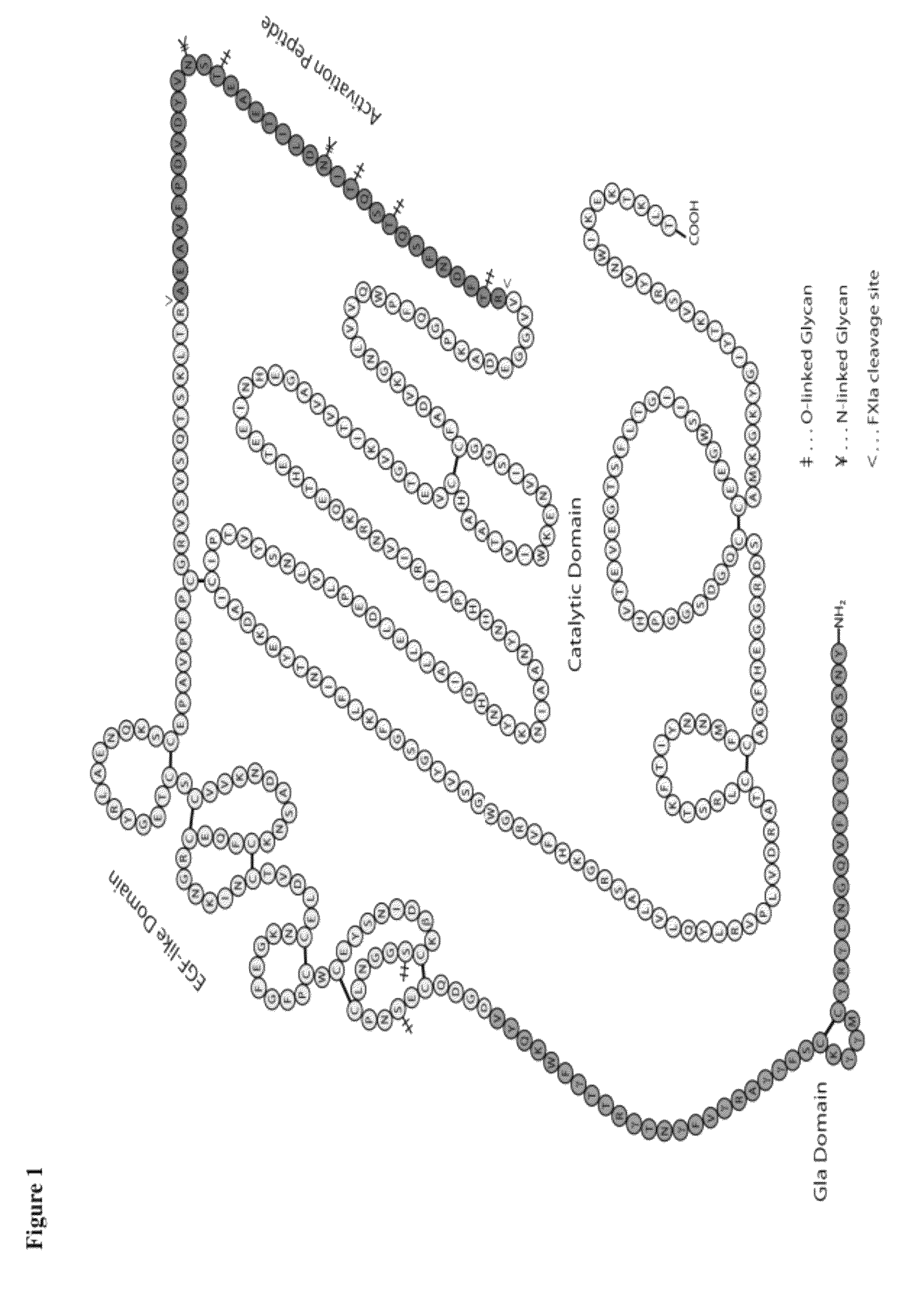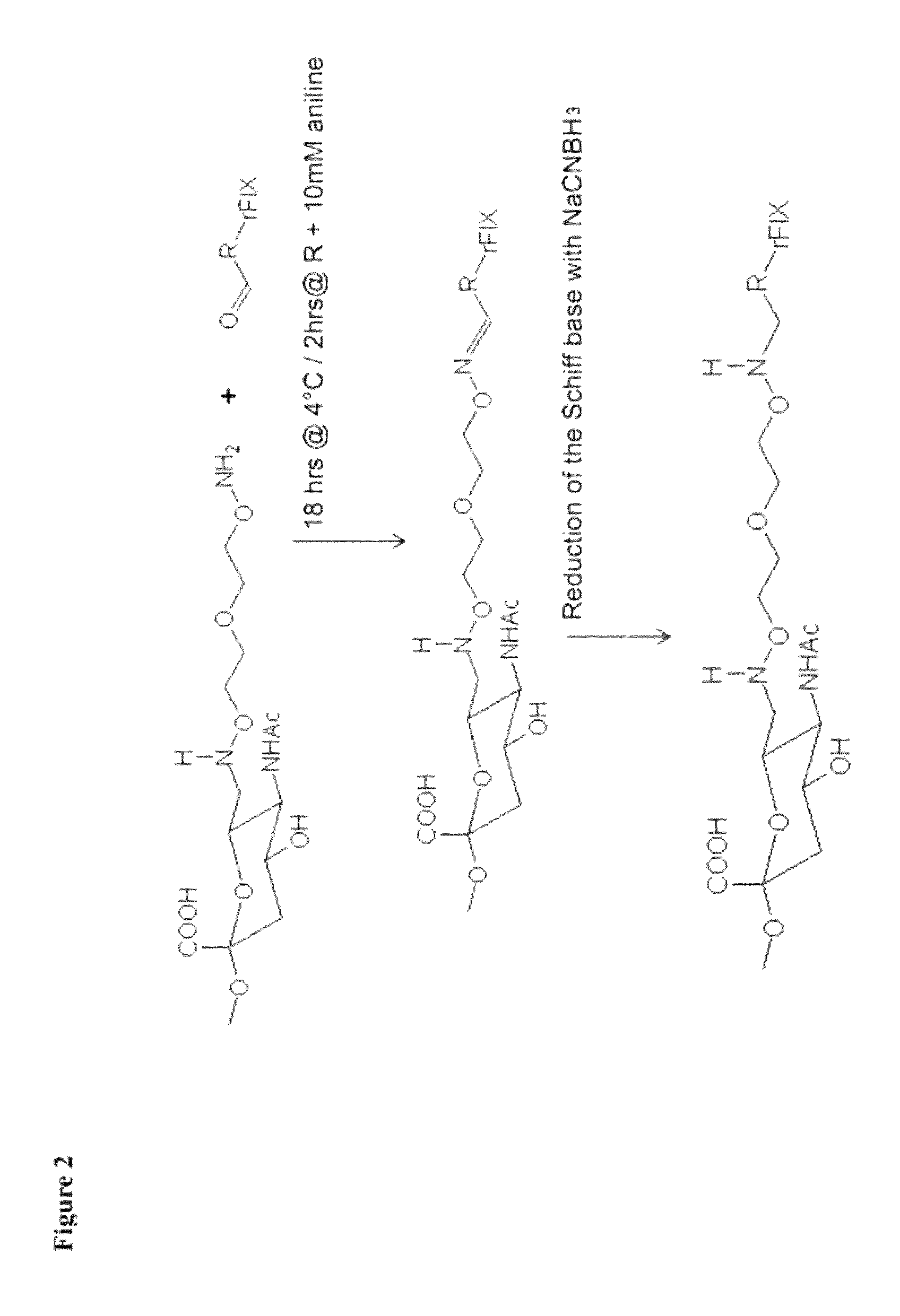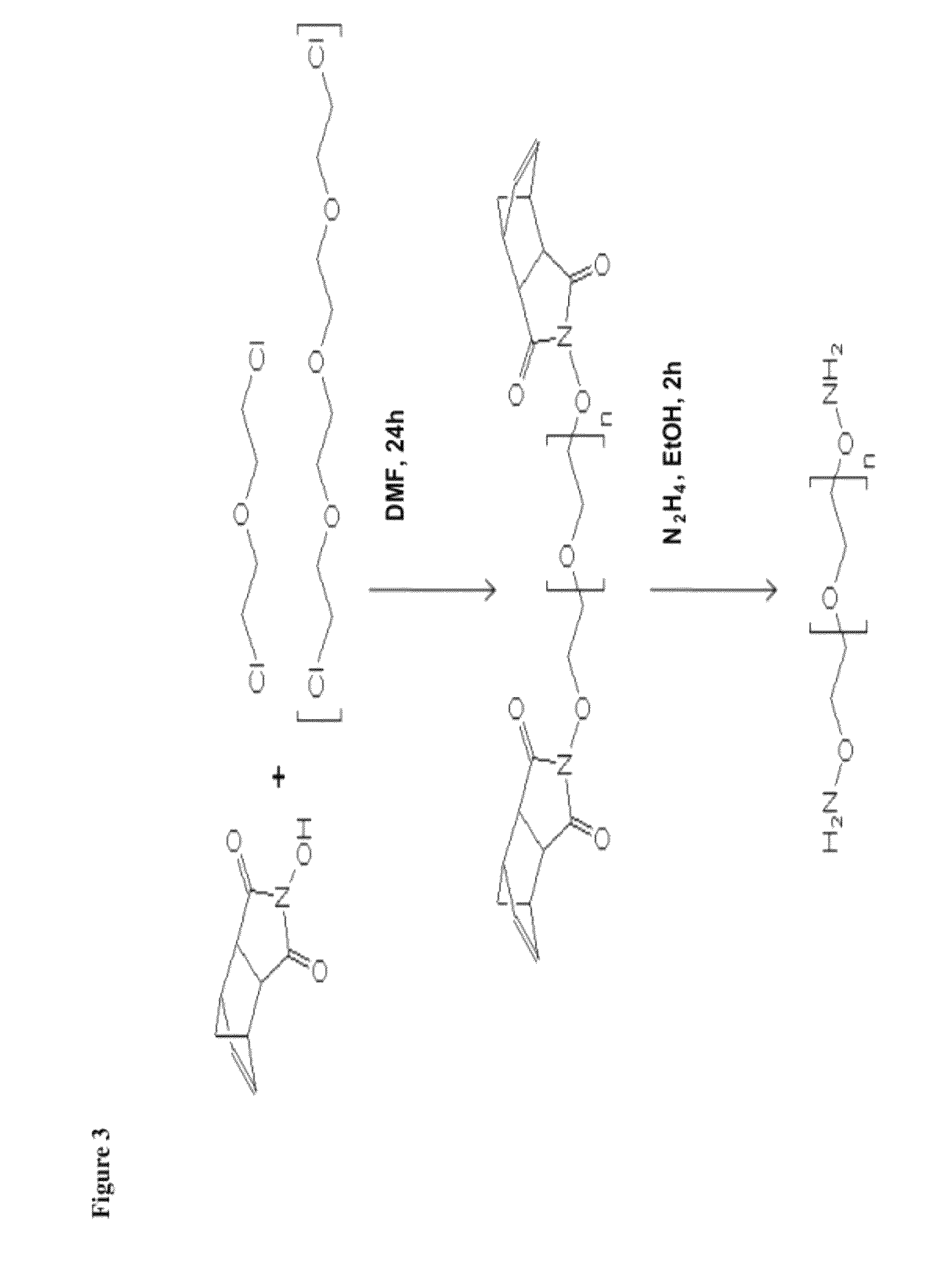Nucleophilic catalysts for oxime linkage
a technology of oxime and catalyst, which is applied in the direction of peptides, peptide/protein ingredients, peptide sources, etc., can solve the problems of aniline toxic properties, and achieve the effect of improving the protein's pharmacodynamic and/or pharmacokinetic properties and minimizing costs
- Summary
- Abstract
- Description
- Claims
- Application Information
AI Technical Summary
Benefits of technology
Problems solved by technology
Method used
Image
Examples
example 1
Preparation of the Homobifunctional Linker NH2[OCH2CH2]2ONH2
[0210]The homobifunctional linker NH2[OCH2CH2]2ONH2
[0211]
[0212](3-oxa-pentane-1,5-dioxyamine) containing two active aminooxy groups was synthesized according to Boturyn et al. (Tetrahedron 1997; 53:5485-92) in a two step organic reaction employing a modified Gabriel-Synthesis of primary amines (FIG. 3). In the first step, one molecule of 2,2-chlorodiethylether was reacted with two molecules of Endo-N-hydroxy-5-norbornene-2,3-dicarboximide in dimethylformamide (DMF). The desired homobifunctional product was prepared from the resulting intermediate by hydrazinolysis in ethanol.
example 2
Preparation of the Homobifunctional Linker NH2[OCH2CH2]4ONH2
[0213]The homobifunctional linker NH2[OCH2CH2]4ONH2
[0214]
[0215](3,6,9-trioxa-undecane-1,11-dioxyamine) containing two active aminooxy groups was synthesized according to Boturyn et al. (Tetrahedron 1997; 53:5485-92) in a two step organic reaction employing a modified Gabriel-Synthesis of primary amines (FIG. 3). In the first step one molecule of Bis-(2-(2-chloroethoxy)-ethyl)-ether was reacted with two molecules of Endo-N-hydroxy-5-norbornene-2,3-dicarboximide in DMF. The desired homobifunctional product was prepared from the resulting intermediate by hydrazinolysis in ethanol.
example 3
Preparation of the Homobifunctional Linker NH2[OCH2CH2]6ONH2
[0216]The homobifunctional linker NH2[OCH2CH2]6ONH2
[0217]
[0218](3,6,9,12,15-penatoxa-heptadecane-1,17-dioxyamine) containing two active aminooxy groups was synthesized according to Boturyn et al. (Tetrahedron 1997; 53:5485-92) in a two step organic reaction employing a modified Gabriel-Synthesis of primary amines. In the first step one molecule of hexaethylene glycol dichloride was reacted with two molecules of Endo-N-hydroxy-5-norbornene-2,3-dicarboximide in DMF. The desired homobifunctional product was prepared from the resulting intermediate by hydrazinolysis in ethanol.
PUM
| Property | Measurement | Unit |
|---|---|---|
| concentration | aaaaa | aaaaa |
| concentration | aaaaa | aaaaa |
| concentration | aaaaa | aaaaa |
Abstract
Description
Claims
Application Information
 Login to View More
Login to View More - R&D
- Intellectual Property
- Life Sciences
- Materials
- Tech Scout
- Unparalleled Data Quality
- Higher Quality Content
- 60% Fewer Hallucinations
Browse by: Latest US Patents, China's latest patents, Technical Efficacy Thesaurus, Application Domain, Technology Topic, Popular Technical Reports.
© 2025 PatSnap. All rights reserved.Legal|Privacy policy|Modern Slavery Act Transparency Statement|Sitemap|About US| Contact US: help@patsnap.com



